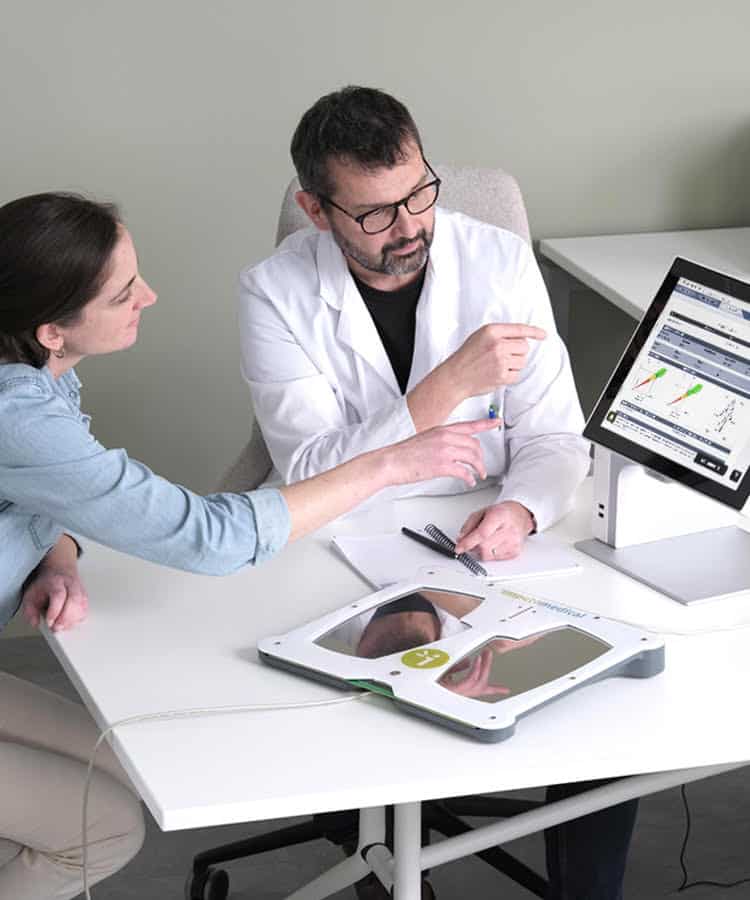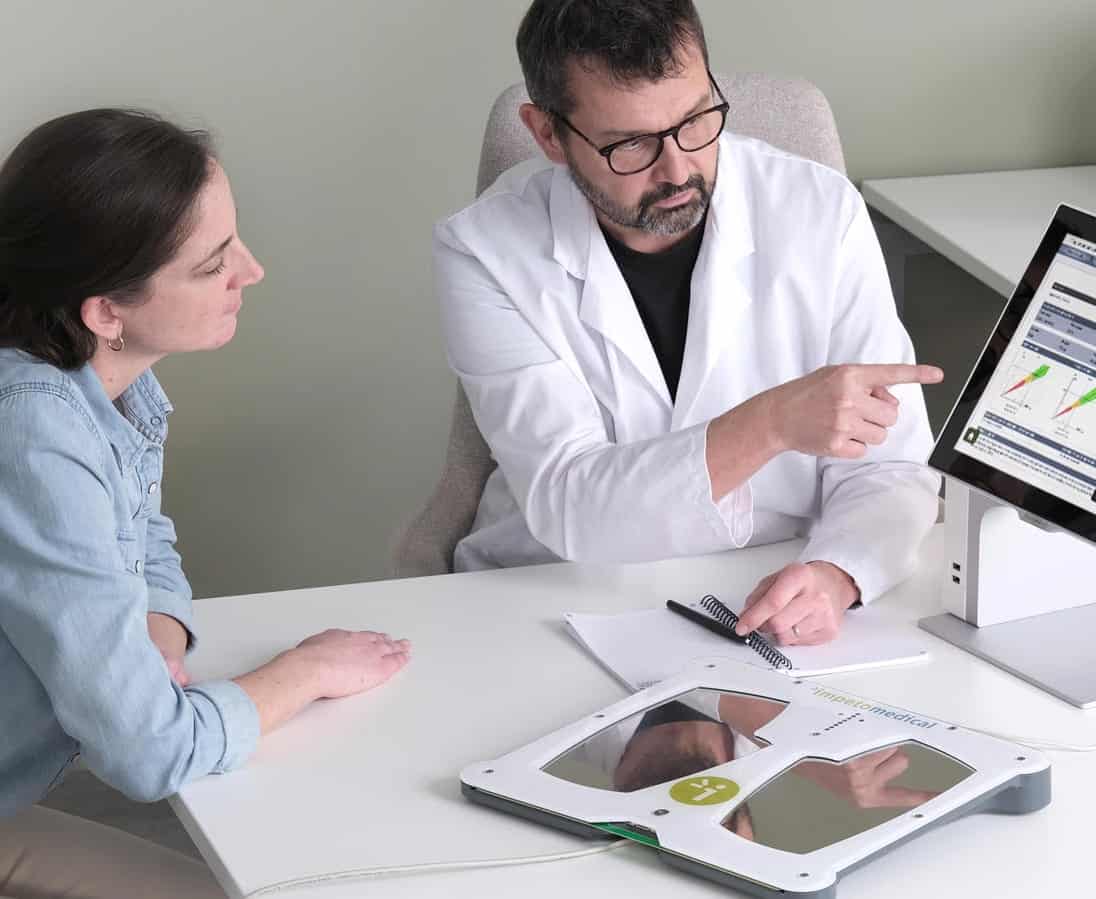
What is EZSCAN?
Small fiber neuropathy and diabetes
The degeneration of small nerve fibers reduces sweat gland innervation and impairs sudomotor function.
The sweat gland function tests by applying a small direct current to both hand and foot sensor plates.
At a low voltage, the stratum corneum acts as a capacitor, leaving the sweat ducts as the only channel for the transmission of Cl- ions.
EZSCAN provide a score of metabolic risk.
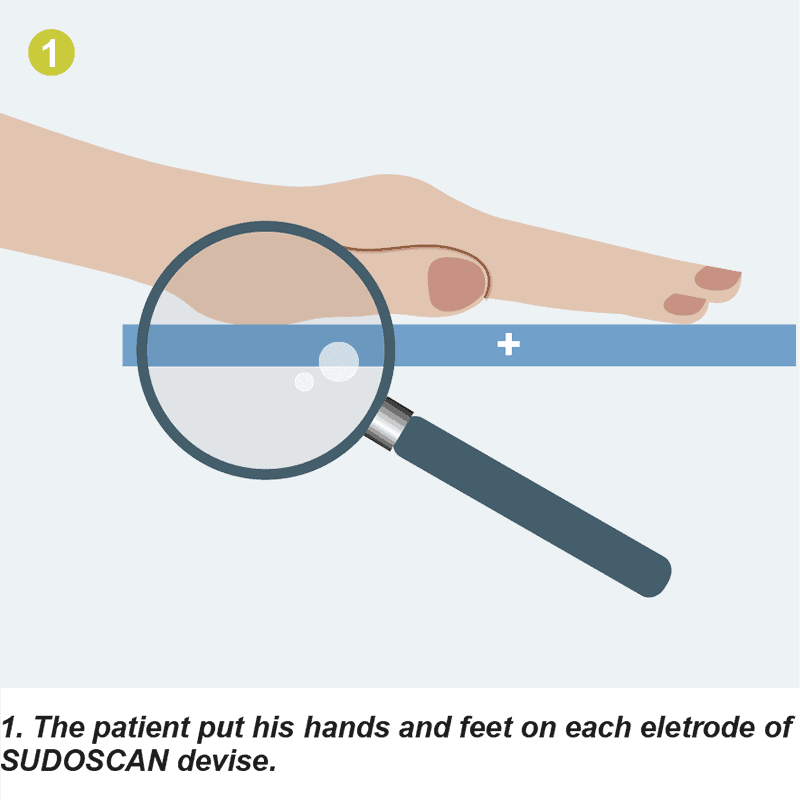
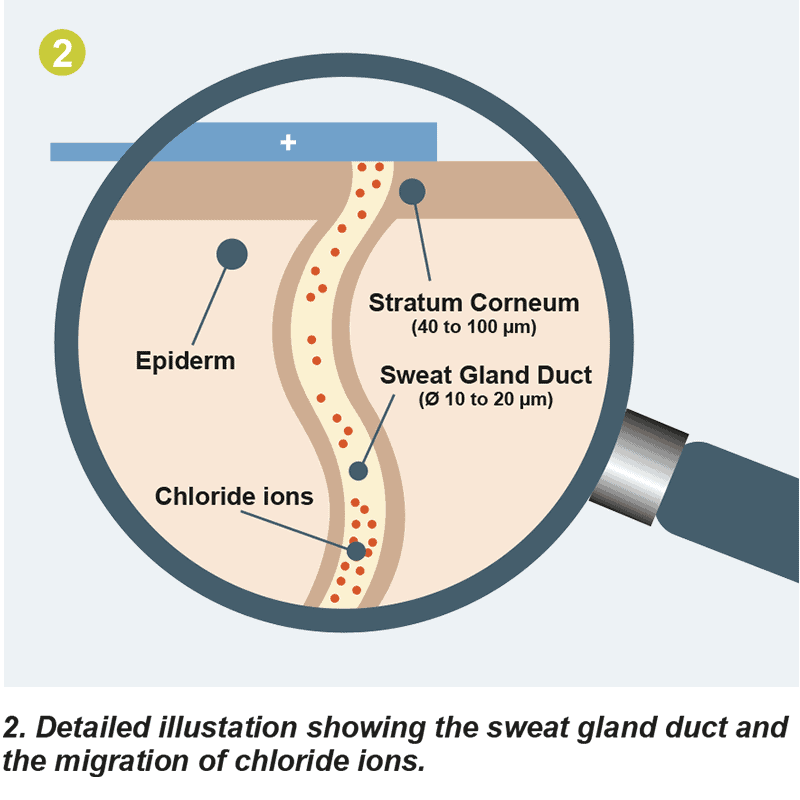
EZSCAN Result Screen
The degeneration of small nerve fibers reduces sweat gland innervation and impairs sudomotor function.
The sweat gland function tests by applying a small direct current to both hand and foot sensor plates.
At a low voltage, the stratum corneum acts as a capacitor, leaving the sweat ducts as the only channel for the transmission of Cl- ions.
EZSCAN provide a score of metabolic risk.
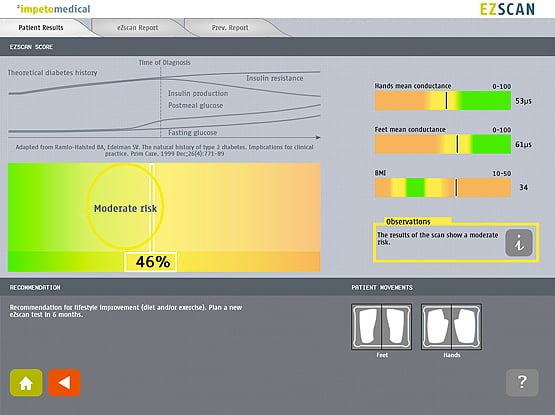
EZSCAN is used around the world as a screening tool
Large screening population in Netherlands
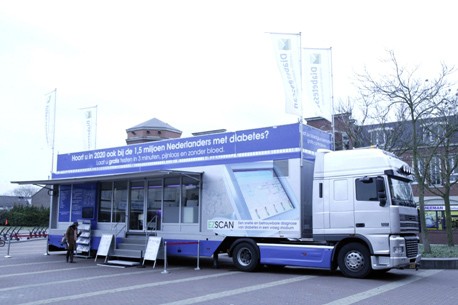
More than 10,000 people already tested with EZSCAN
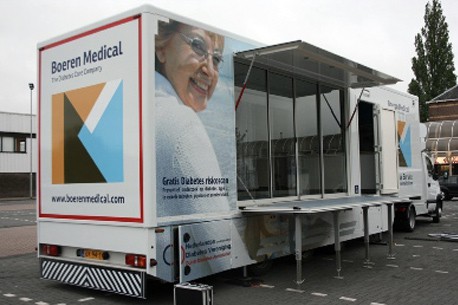
Large screening population in China
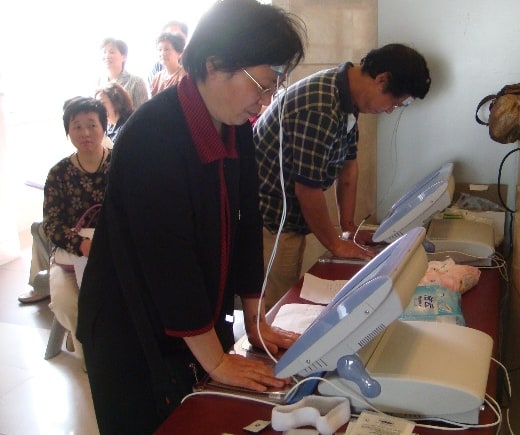
FAQ
EZSCAN Publications
If you wish to receive more information about one of our publications below, please click here to send us an email. Don’t forget to specify the full title of the publication you are interested in.
EZSCAN
Zhu L, Zhao X, Zeng P, Zhu J, Yang S, Liu A, Song Y. Study on autonomic dysfunction and metabolic syndrome in Chinese patients. J Diabetes Investig. 2016 Nov; 7(6): 901–907. Full article
Bajaj S, Tiwari A, Chaurasia AK, Shukla RP. Detection of microvascular complications of type 2 diabetes by EZSCAN and its comparison with standard screening methods. J. Evid. Based Med. Healthc. 2016; 3(66), 3579-3583. Full article
Schwarz P. Screening and prevention of diabetes. Der Internist. 2015;56(10):1124-1133. Abstract here
Chen X, Chen L, Ding R, Shi Q, Zhang Y, Hu D. A preliminary investigation of EZSCAN™ screening for impaired glucose tolerance and diabetes in a patient population. Exp Ther Med. 2015 May;9(5):1688-1694. Full article
Sanchez Hernandez OE, Papacostas-Quintanilla H, Vilier A, Calvet JH, Jiménez Osorio A , Sánchez Trampe BI, Musalem Younes C, Rodriguez-Arellano ME. EZSCAN as a Screening Tool for Prediabetes and Diabetes in a Large Mexican Population. J Diabetes Metab 6:505. doi: 10.4172/2155-6156.1000505. Full article
Sun W, Zhang D, Sun J, Xu B, Sun K, Wang T, Ren 2, Li J, Chen Y, Xu M, Bi Y, Xu Q, Wang W, Gu Y, Ning G. Association between non-alcoholic fatty liver disease and autonomic dysfunction in a Chinese population. QJM 2015;108(8):617-24. Abstract here
Zeng Q, Dong SY, Wang ML, Xiang H, Zhao XL. Association of EZSCAN Values with Arterial Stiffness in Individuals without Diabetes or Cardiovascular Disease. Plos one 2014 Mar 3;9(3):e90854. doi: 10.1371/journal.pone.0090854. Full article
Parfentyeva E, Saha S, Hjellset VT, Kopprasch S, Schwarz PE. Assessment of Small C-Fiber Status for Screening of Oxidative Stress in Patients at Risk of Diabetes.Horm Metab Res 2014;46(5):360-4. Abstract here
Sun J, Zhang Y, Xu B, Lv X, Ding L, Chen Y, Sun W, Lu J, Xu M, Bi Y, Ning G. Autonomic dysfunction assessed by EZSCAN and subclinical atherosclerosis. J Diabetes 2014;6(5):409-16. Abstract here
Müller G, Olschewski J, Stange T, Hjellset VT, Bornstein S, Schwarz PE. Non-invasive Screening of Diabetes Risk by Assessing Abnormalities of Sudomotor Function. Exp Clin Endocrinol Diabetes 2013; 121: 1–5. Abstract here
Müller G, Parfentyeva E, Olschewsky J, Bornstein SR, Schwarz PE. Assessment of small fiber neuropathy to predict future risk of type 2 diabetes. Primary Care Diabetes 2013;7(4):269-73. Abstract here
Chen L, Chen X, Ding R, Shi Q Jr, Hu D. Evaluation of EZSCAN as a screening tool for impaired glucose metabolism. Diabetes Research & Clinical Practice 2013;100 (2):210-4. Abstract here
Yang Z, Xu B, Lu J, Tian X, Li M, Sun K, Huang F, Liu Y, Xu M, Bi Y, Wang W.Autonomic test by EZSCAN in the screening for prediabetes and diabetes. Plos one 2013;8(2):e56480. Full article
Sun K, Liu Y, Dai M, Li M, Yang Z, Xu M, Xu Y, Lu J, Chen Y, Liu J, Ning G, Bi Y. Accessing autonomic function can early screen metabolic syndrome. Plos One 2012;7(8). Full article
Sheng CS, Zeng WF, Huang QF, Deslypere JP, Li Y, Wang JG. Accuracy of a novel non-invasive technology based EZSCAN system for the diagnosis of diabetes mellitus in Chinese. Diabetology & Metabolic Syndrome 2011;22;3(1):36. Full article
Ozaki R, Cheung KK, Wu E, Kong A, Yang X, Lau E, Brunswick P, Calvet JH, Deslypere JP, Chan JC. A new tool to detect kidney disease in Chinese type 2 diabetes patients—comparison of EZSCAN with standard screening methods. Diabetes technology & therapeutics 2011;13(9):937-43. Abstract here
Schwarz PE. Brunswick P, Calvet JH. EZSCAN a new tool to detect diabetes risk. British Journal of Diabetes & Vascular diseases 2011;11(4):204-9. Full article
Ramachandran A, Moses A, Shetty S, Thirupurasundari CJ, Seeli AC, Snehalatha C, Singvi S, Deslypere JP. A new non-invasive technology to screen for dysglycemia including diabetes. Diabetes Research & Clinical Practice 2010;88:302-6. Abstract here
Ramachandran A, Moses A, Snehalatha C, Shetty S, Thirupurasundari CJ, Seeli AC. Assessment of sudomotor function to predict future abnormalities of glucose tolerance in at risk population. Journal of Diabetes & Metabolism 2011;2(3):1-4. Full article
NOT REFERENCED ARTICLES
Bouenizabila E, Kakou C, Bauduceau B, Calvet J-H, Carmoi T. Dépistage du diabète de type 2 et de ses complications en Afrique sub-saharienen : la place potentielle de Sudoscan. Médecine des Maladies Métaboliques. 2015 ; 9 : 165-170. Full Article (French)
Bauduceau B, Bordier L. Intérêt pratique de SUDOSCAN, Une technique innovante pour l’exploration de la neuropathie diabétique et le dépistage du diabète. Diabétologie Pratique, Février 2015. Abstract here (French)
Tillier J. N., Le Canuet P, Calvet J.H. Intérêt de Sudoscan pour l’exploration des neuropathies des petites fibres en pratique neurologique courante. Neurologie Libérale. 2015;4 :20-22. (not online)
Calmet A, Ayoub H, Lair V, Griveau S. Diagnostic précoce et non invasif des neuropathies des petites fibres. L’actualité chimique 2014 ;390 :48-49. Abstract here (French)
Mouly C, Hanaire H, Sénard J-M, Gerdelat A, Pavy-Letraon A. SUDOSCAN chez le diabétique, intérêt en pratique clinique. Diabète et obésité 2014 ;9 :186-90. Abstract here (French)
Calvet J-H Sudoscan : une technique innovante pour l’exploration des neuropathies des petites fibres. Neurologie libérale. 02 – avril-mai-juin 2014 :14-16. (No link available)
Bauduceau B, Bordier L. SUDOSCAN et EZSCAN : deux applications pour les diabétiques d’une même technique innovante. Médecine des maladies Métaboliques 2013;7(6). Abstract here (French)

